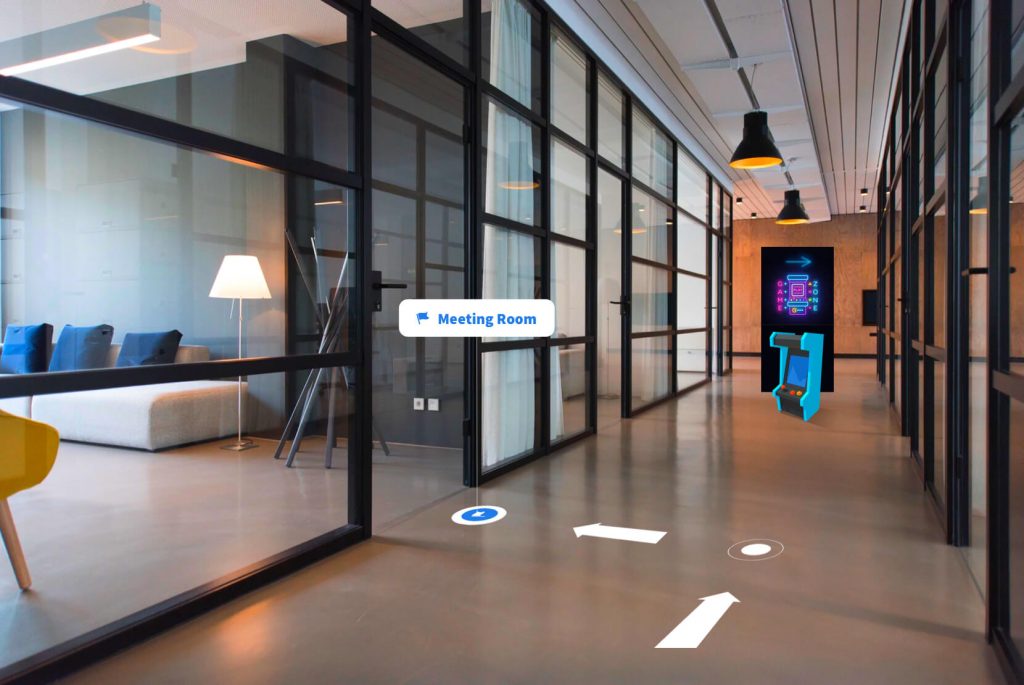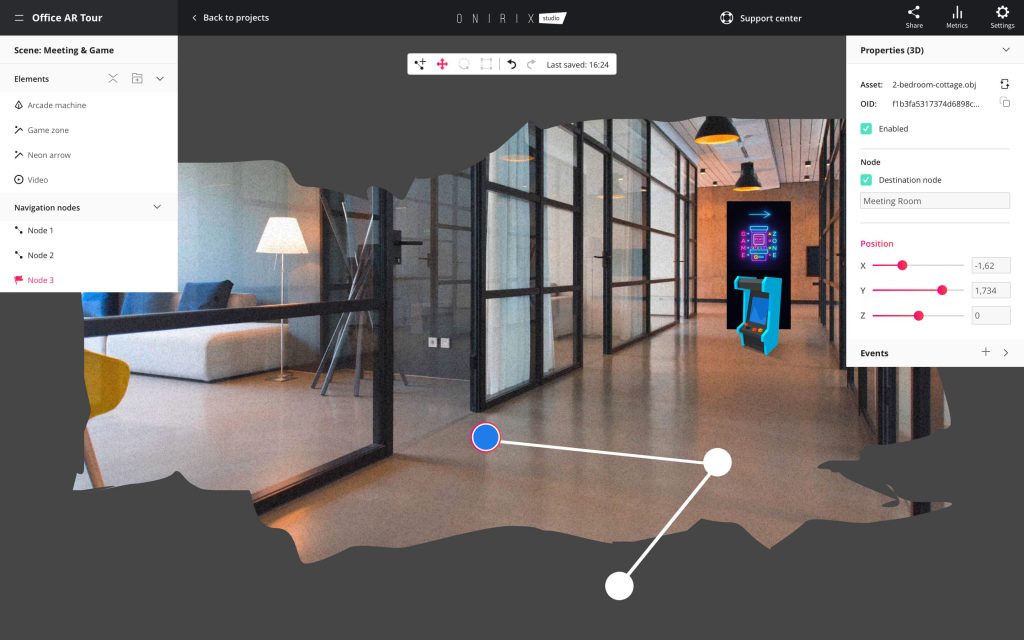Upcoming: Spatial AR
Contents
Augmented reality has massively evolved in recent years. We’ve gone from scanning basic shapes on mobile devices with 4-inch screens and VGA cameras, which moved just over dozens of polygons in the early 2000s, to scanning any type of image or even detecting surfaces and bringing them to life – this time with photorealistic 3D models with millions of polygons.
However, there is a common drawback that has remained to this day: experiences have always been limited to a very small area like a desk or a small room, which can be an exclusion criterion for many use cases.


Vision-based Augmented Reality
Our vision-based augmented reality is making use of spatial AR and understands the environment in much more detail than image or surface-based experiences. Let’s take a look at an example:
Previously, if a museum wanted to include augmented information about a work of art, a image could be used so that when this piece was recognized the information would appear. This process needed to be repeated every time. Each piece of art was, therefore, an isolated experience, which could be interesting in some cases, but very limiting in others:
How can you guide visitors through an area on a specific path? How can you indicate the location of the next experience? How can you include augmented information about the location itself, without the context of other elements?


With spatial AR, it is possible to create a very detailed 3D scan of an entire location and use that digital representation called point cloud to add virtual content (3D models, audio, video, etc.) to the scene, including visual guidance.
This technology opens up a new world of possibilities for augmented reality. Initially, it was “limited” to contained spaces (e.g. factories, airports, museums), but as the technology is maturing, the entire world could become a vision-based AR experience. This concept is commonly known as “the AR Cloud” and all that remains is for someone to devote themselves to scanning the planet and storing that information.
Conclusion
This is the first step toward this new technology, which will transform the augmented reality scene. However, this does not mean that other AR experiences like image or surface-based will disappear immediately. They maintain their right to exist and remain highly recommended for specific use cases. This new technology simply opens up a new range of possibilities for experiences that were simply not possible before.
If you are interested in trying the latest beta version, please get in touch with us. More about vision-based AR and spatial AR:
Beta for new AR type in Onirix has started
